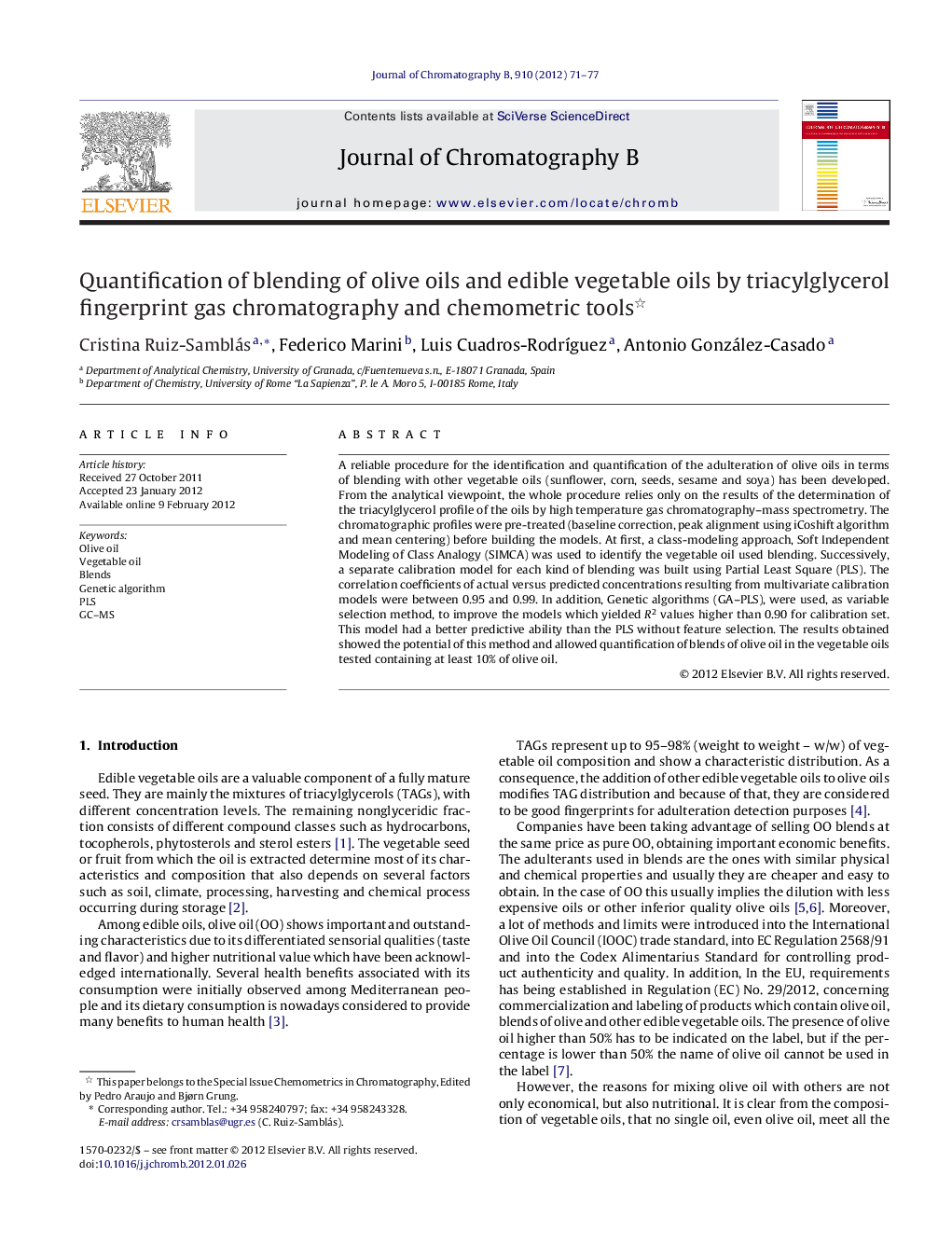| Article ID | Journal | Published Year | Pages | File Type |
|---|---|---|---|---|
| 1216747 | Journal of Chromatography B | 2012 | 7 Pages |
A reliable procedure for the identification and quantification of the adulteration of olive oils in terms of blending with other vegetable oils (sunflower, corn, seeds, sesame and soya) has been developed. From the analytical viewpoint, the whole procedure relies only on the results of the determination of the triacylglycerol profile of the oils by high temperature gas chromatography–mass spectrometry. The chromatographic profiles were pre-treated (baseline correction, peak alignment using iCoshift algorithm and mean centering) before building the models. At first, a class-modeling approach, Soft Independent Modeling of Class Analogy (SIMCA) was used to identify the vegetable oil used blending. Successively, a separate calibration model for each kind of blending was built using Partial Least Square (PLS). The correlation coefficients of actual versus predicted concentrations resulting from multivariate calibration models were between 0.95 and 0.99. In addition, Genetic algorithms (GA–PLS), were used, as variable selection method, to improve the models which yielded R2 values higher than 0.90 for calibration set. This model had a better predictive ability than the PLS without feature selection. The results obtained showed the potential of this method and allowed quantification of blends of olive oil in the vegetable oils tested containing at least 10% of olive oil.
► Reliable method for quantification of olive oils adulteration with vegetable oils. ► Determination triglycerides profile by HTGC–MS, use of all data points to get results. ► Chromatograms were pre-treated (baseline correction, peak alignment) before building models. ► Genetic algorithms were used as variable selection method to improve the models.
